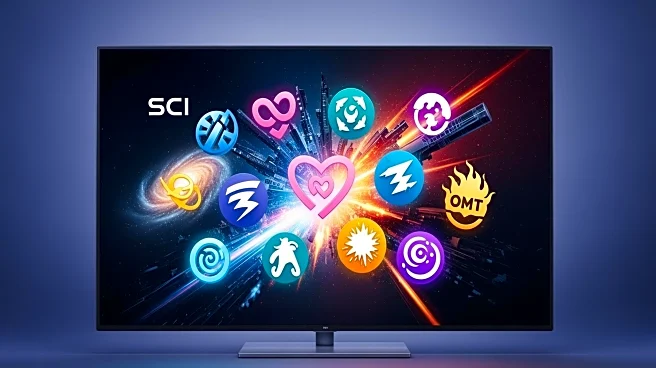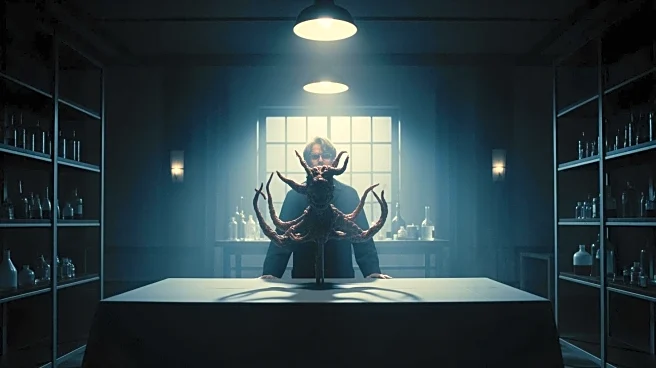What's Happening?
Hollywood studios have unveiled their lineup for Fall 2025, featuring seven major film releases that are set to redefine viewing habits. Among the highlights is Guillermo del Toro's 'Frankenstein,' which will premiere in theaters on October 17 and transition
to Netflix by November 7, showcasing a compressed theatrical-to-streaming window. This strategy is indicative of a broader trend where studios are shortening the gap between theatrical releases and streaming availability to maximize audience engagement and subscription growth. Other notable releases include 'Tron: Ares,' a reboot aiming to revive the franchise with a theatrical release on October 10, and 'Black Phone 2,' a horror sequel expected to draw significant box office returns starting October 17. The lineup also includes adaptations and biopics such as 'Regretting You' and 'Springsteen: Deliver Me From Nowhere,' both set for late October, and Edgar Wright's dystopian remake 'The Running Man' in mid-November. The season will conclude with 'Wicked: For Good,' a musical finale scheduled for November 21, strategically positioned for Thanksgiving audiences.
Why It's Important?
The Fall 2025 film releases are significant as they reflect a shift in Hollywood's distribution strategy, emphasizing shorter theatrical windows and quicker transitions to streaming platforms. This approach is designed to cater to changing consumer preferences, where audiences increasingly favor immediate access to content. The compressed windows are likely to influence subscription choices and boost streaming service revenues, as viewers may opt for platforms offering timely access to new releases. Additionally, the strategic timing of these releases around major holidays and award seasons could enhance box office performance and increase competition among streaming services. Studios are betting on the appeal of high-profile releases to drive both ticket sales and streaming subscriptions, potentially reshaping the industry's economic landscape.
What's Next?
As these films hit theaters and streaming platforms, industry stakeholders will closely monitor audience reception and box office performance. The success of these releases could prompt further adjustments in distribution strategies, with studios potentially adopting even shorter windows or experimenting with simultaneous releases. The impact on subscription growth for streaming services will be a key metric, influencing future content acquisition and production decisions. Additionally, the reception of these films during award seasons could affect their longevity in theaters and streaming platforms, with positive reviews potentially extending their run and boosting viewership. The evolving landscape may also lead to increased collaboration between studios and streaming services to optimize release strategies and maximize audience reach.
Beyond the Headlines
The shift towards compressed theatrical-to-streaming windows raises questions about the future of traditional cinema experiences. As studios prioritize streaming platforms, the role of theaters may evolve, focusing more on event-driven releases and immersive experiences that cannot be replicated at home. This trend also highlights the growing influence of streaming services in shaping content distribution and consumer behavior. Ethical considerations may arise regarding the impact on smaller theaters and independent films, which could struggle to compete with major studio releases. The cultural implications of this shift may lead to changes in how audiences engage with films, potentially prioritizing convenience over communal viewing experiences.













